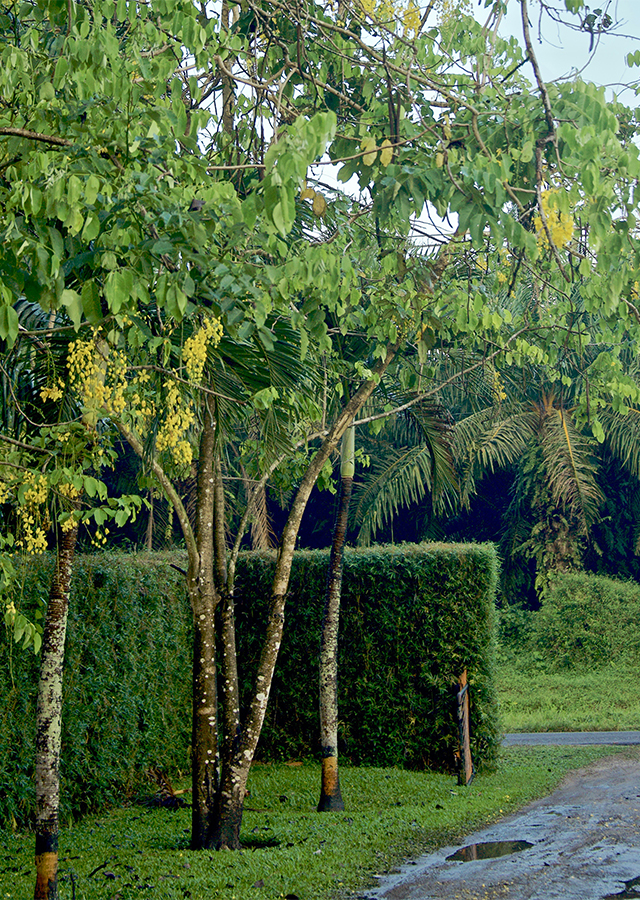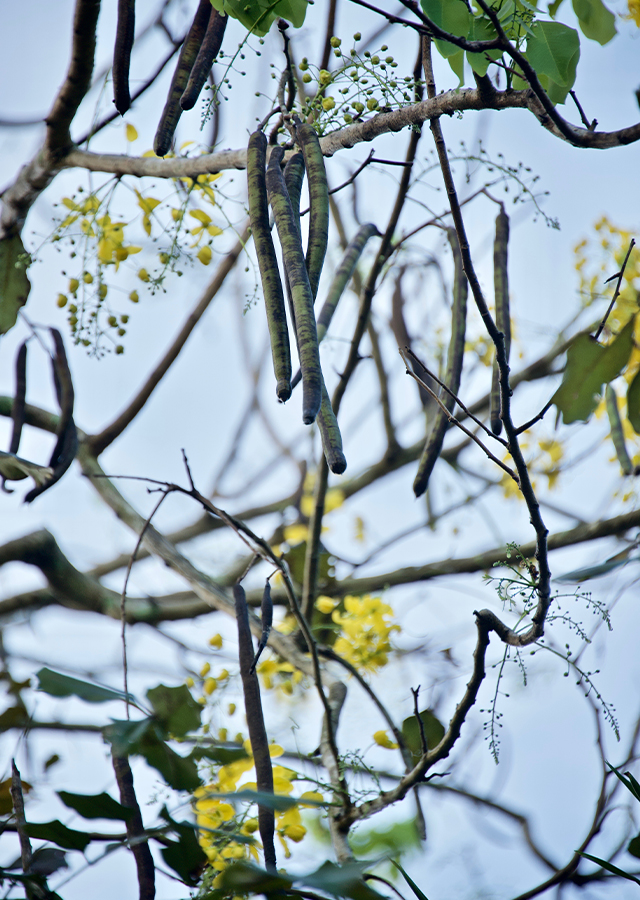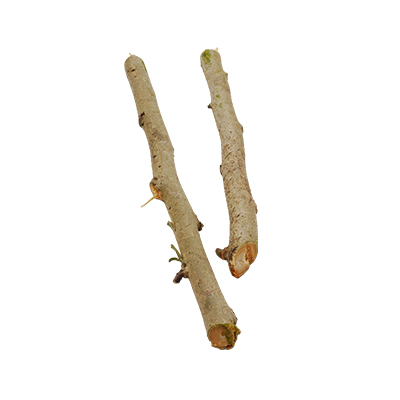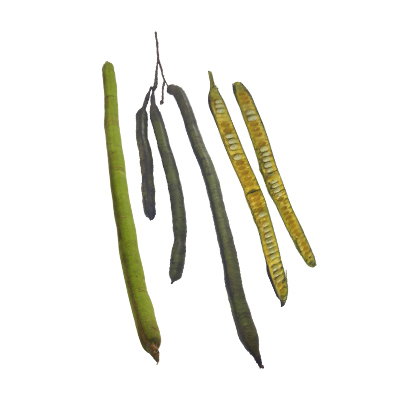Golden shower; Indian laburnum
Cassia fistula L.
Fabaceae
Location in our garden
Principal



Synonym
Bactyrilobium fistula (L.) Willd.
Cassia bonplandiana DC.
Cassia fistuloides Collad.
Habitus
Trees. A perennial, slow-growing deciduous or semi-deciduous tree, grow up to10-15m tall.
Part Used
Young pods
Leaves
Bark
Roots
Growing Requirements
Full Sunshine
Need Shade
Drought Resistant
Habitat
Riverbanks
Forest
Coastal
Roadside
Grassland
Overview
The species is known to be native to Southeast Asia and was introduced by humans for medicine, fuel, timber, and tanning applications in the Old and New World tropics. The tree, dating back to ancient times, has a very long history of medicinal use and is still widely used in modern medicine. In the tropics, it is commonly planted as an ornamental, being particularly attractive when flowering begins because at this time it is leafless.
Vernacular Names
La chang shu (China), Baton casse (French), Roehren-Kassie (Germany), Amaltas (India), Cassia in bastoni (Italy), Ibabau (Philippines), Bereksa (Malaysia), Canafistola (Spanish), Chaiyaphruek (ai), and Muồng hoàng yến (Vietnamese), Trengguli (Indonesia), Kayu raja (Indonesia), Bobondelan (Sundanese), Klobop (Madurese).
Agroecology
A deep, well-drained, moderately fertile sandy loam and a full sun location are favored. Plants are good in the dry to humid tropics and subtropics, increasing in areas where annual rainfall is between 500 and 2,700 mm and annual average temperatures are between 18 and 29 ° C. Calcareous and red, volcanic soils tend to prefer it, but it is also present on sandy and loamy soils with pH 5.5-8.7.
Morphology
- Root - in this species, hairs are rare, and when present, C. fistula is among those legumes that do not have root nodule- forming when they are sparse and thick wall.
- Bark - gray, when young, smooth to slightly ridged and slender and when ripe, changes to a darker grey-brown. Sparse to densely hairy are the stems and young twigs.
- Leaves - smooth, ovate-oblong 7-12cm x 4-8cm, with 3-8 pairs of leaflets, hairy below, shiny on upper surface, glabrous when mature, alternating, pinnate, and deciduous.
- Flowers - axillary inflorescence, pendulous, lax raceme, 20-60cm long. Flowers fragrant, sepal 7-10mm long. Petal broadly ovate, golden yellow, stamens 10.
- Fruits - cylindrical, indehiscent, pendulous pods, up to 20-60cm long, 1.5-2cm in diameter. It is green when young and turning to dark brown when ripening.
- Seeds - numerous, ellipsoid, 8-9 mm long, glossy light brown in colour.
Cultivation
- Seeds - The seeds have a hard seed coat and germination is increased for at least 45 minutes by treatment with concentrated sulphuric acid.
- From cuttings of half-ripe wood.
Chemical Constituents
- Linoleic, oleic, stearic acid, oxalic acids, tannins, oxyanthra-quinones, anthraquinones derivatives, rhein glycosides fistulic acids, sennosides A B, anthraquinones, and flavanoid-3-ol-derivatives.
Traditional Medicinal Uses
- The plant is used to treat intestinal disorders, skin disorders, constipation, common cold, booster of immunity, beneficial for heart attacks, fever, wounds, relieves flatulence, battles inflammation, cures erysipelas, helps to cure dyspepsia, to treat chronic cough, to aid diabetics, to alleviate urinary problems.
- The seeds are known as laxative, aperitif, carminative, and antibilizer.
- Biliosis, constipation, fever, leprosy, and skin disease are used for the buds.
- The ripe pods and seeds are commonly used as a laxative in traditional as well as conventional medicine. There are also laxative properties of the root-bark, leaves and bulbs, but to a lesser degree.
- The pulp of the pods is used to flavor tobacco in Bengal.
- In India and Bangladesh, flowers are used in religious rituals, and flowers and buds are also eaten as food.



